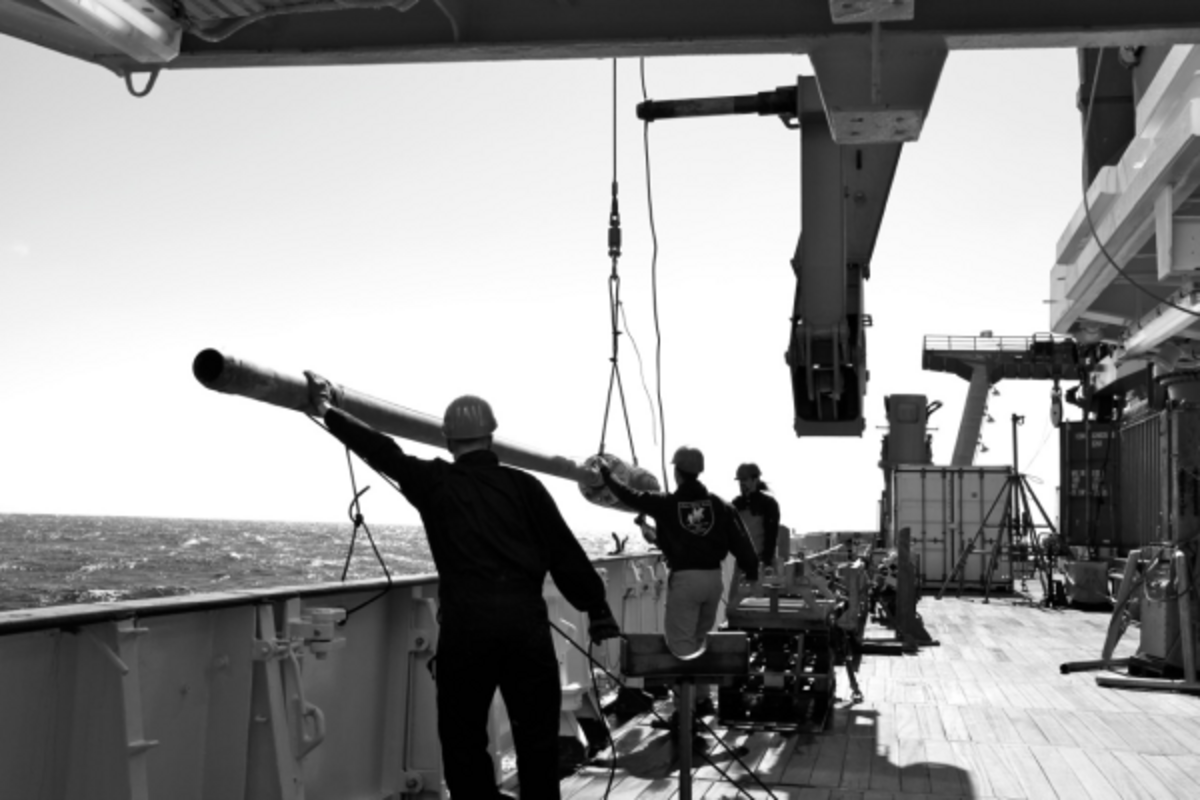Method / Description pH-value (in the sediment)
APPARATUS:
Cylinder (40 cm3 )
Volumetric flask (1000 cm3 )
Various bottles to store the reagents
2 pH-electrodes
pH-meter
Holder for the electrodes
Small thermometer
REAGENTS:
2-aminopyridine-buffer (pH 7.2 - 7.4): BIS-buffer (pH 9.4 - 9.6):
2-aminopyridine (7.5231 g) 2-amino-2-methyl-1,3 propanediol (8.4039g)
NaCl (22.6457g) NaCl (22.6457g)
KCl (0.7884 g ) KCl (0.7884 g )
MgCl2 (5.2119 g) MgCl2 (5.2119 g)
CaCl2 (1.1931 g) CaCl2 (1.1931 g)
Na2SO4 (4.1563 g) Na2SO4 (4.1563 g)
40 cm3 HCl (1N) 40 cm3 HCl (1N)
Artificial sea water (for 1000 cm3):
NaCl (24.9926 g)
KCl (0.7884 g )
MgCl2 (5.2119 g)
CaCl2 (1.1931 g)
Na2SO4 (4.1563 g)
The reagents for aminopyridine-buffer, BIS-buffer and artificial seawater are made up to 1 dm3 with pure water.
KCl-solution: 3 M
CALIBRATION:
The pH-electrode is calibrated with BIS und AMPY seawater standards. The temperature-dependent slope (s) and intercept (i) of the electrode are determined from the potential measurement (E) in the two standard buffer solutions:

with

and

The pH-values for the buffers, at the corresponding temperatures, are listed in the table at the end of this description (Dickson, 1993).
PROCEDURE:
pH-meter and electrodes should be kept in the cold room for the whole cruise, to avoid complications because of corrosion at the contacts, as a result of condensation.
The electrode has to be cleaned regularly (remove the cap, rinse sediment residues and refill with KCl-solution).
The electrode should always be equilibrated in artificial sea water before the measurements. The potential signal should be stable after about 10 seconds. You should always store enough pure water in the cold lab, to rinse the electrode.
For the correct measurement of the pH-value you must push the electrode into the sediment (don`t measure the pore water!). Mini-and multi-corer sediments are first sectioned into slices and then analyzed by introducing the pH sensor into each of the sediment slices. During the pH measurements, sediment temperature has to be recorded with a small thermometer. In gravity cores the electrode is pushed into the sediment cores at selected depths.
CALCULATION:
pH-SAMPLE:

With this method pH-values are determined for on-board p-t conditions. An addition parameter (i.e. alkalinity) is needed to calculate pH for in situ p-t conditions.
INTERFERENCES:
Losses of CO2 and H2S into the gas phase and H2S oxidation might falsify the pH-value. Therefore the samples have to be measured as fast as possible after sampling.
T°C pH (BIS) pH (AMPY)
1 9.644856 7.379848
1,5 9.626339 7.36653
2 9.607873 7.35324
2,5 9.589457 7.339977
3 9.571092 7.326743
3,5 9.552778 7.313535
4 9.534513 7.300355
4,5 9.516299 7.287203
5 9.498133 7.274077
5,5 9.480017 7.260979
6 9.461951 7.247908
6,5 9.443933 7.234863
7 9.425963 7.221846
7.5 9.408042 7.208855
8 9.39017 7.19589
8.5 9.372345 7.182952
9 9.354568 7.17004
9.5 9.336838 7.157155
10 9.319155 7.144295
11 9.283931 7.118654
12 9.248893 7.093117
13 9.21404 7.067681
14 9.17937 7.042348
15 9.144881 7.017115
16 9.110571 6.991982
17 9.076439 6.966948
18 9.042484 6.942013
19 9.008703 6.917176
20 8.975095 6.892435
21 8.941658 6.867791
22 8.908391 6.843242
23 8.875293 6.818788
24 8.842361 6.794428
25 8.809595 6.770162
26 8.776993 6.745988
27 8.744553 6.721906
28 8.712275 6.697915
29 8.680155 6.674014
30 8.648194 6.650204
* Dickson 1993 (Deep-Sea Research. 40, 107-118)



